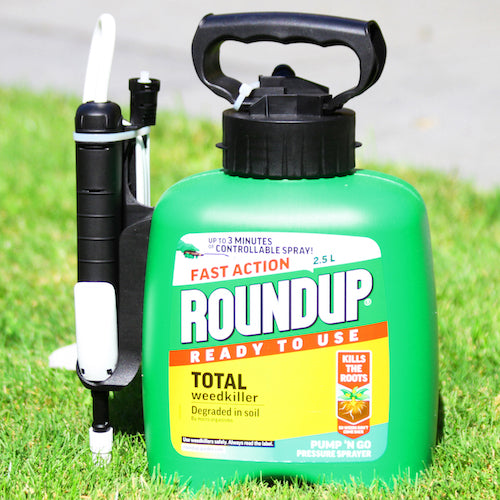Roundup Risks
Posted on August 19 2024
Further to recent posts we've published on Roundup and its link to non-Hodgkin lymphoma, this week we are sharing an article summarising the potential health risks and environmental effects associated with this commonly used herbicide, including the unintended consequences for pollinators, water-ways and soil health.
If you're interested in safe, non-toxic weed killers to use as an alternative to Roundup check out what's on offer at your local garden centre, ask for organic or natural herbicides that do not contain glyphosate.
There are also DIY options on our blog such as the DIY Natural Weed Killer which is made with just soda ash, castile soap and water, or the Easiest Ever Weed Killer made with our double-strength cleaning vinegar and liquid castile dish wash.
The Hidden Risks of Roundup: What You Need to Know
Roundup, one of the most widely used herbicides in the world, has long been a staple in agricultural practices, home gardening, and landscaping. Its active ingredient, glyphosate, is highly effective at killing weeds, making it a go-to solution for many.
What is Roundup?
Roundup is a glyphosate-based herbicide first introduced by Monsanto (now owned by Bayer) in the 1970s. Glyphosate works by inhibiting a specific enzyme pathway essential for plant growth, effectively killing weeds while leaving crops unharmed—at least in theory. While it has been praised for its effectiveness, the widespread use of Roundup has raised concerns about its impact on human health and the environment.
Health Risks Associated with Roundup
Potential Carcinogen
One of the most alarming risks associated with Roundup is its potential link to cancer. In 2015, the World Health Organization’s International Agency for Research on Cancer (IARC) classified glyphosate as a "probable human carcinogen." This classification was based on studies that suggested a connection between glyphosate exposure and non-Hodgkin lymphoma, a type of cancer affecting the lymphatic system.
Endocrine Disruption
There is also evidence to suggest that glyphosate may act as an endocrine disruptor, interfering with the body’s hormonal balance. Endocrine disruptors can mimic, block, or alter the normal functioning of hormones, potentially leading to reproductive issues, developmental problems, and other health concerns.
Environmental Risks of Roundup
Impact on Pollinators
Glyphosate doesn’t just affect weeds—it can also have unintended consequences for beneficial insects such as bees and butterflies. Pollinators are crucial to the health of our ecosystems and food supply, but studies have shown that glyphosate can reduce the availability of plants that these insects rely on for food.
Water Contamination
Another environmental concern is the potential for glyphosate to contaminate water sources. Runoff from agricultural fields and gardens can carry glyphosate into rivers, lakes, and groundwater. This contamination poses a threat to aquatic life and may also affect the quality of drinking water.
Soil Health
Glyphosate’s impact on soil health is another area of concern. While it is intended to target weeds, glyphosate can also affect the microbial communities in the soil, disrupting the delicate balance that is essential for healthy plant growth.
Weighing the Risks
While Roundup remains a widely used and effective herbicide, it is important to be aware of the potential risks associated with its use. The concerns surrounding glyphosate’s impact on human health and the environment cannot be ignored. For those who are concerned about these risks, considering alternatives to glyphosate-based herbicides or adopting integrated pest management strategies may be a safer approach.
The information in the above article is from consumernotice.org.
Please seek the advice of a medical professional before making health care decisions.
If you don’t want Roundup near your property there is something you can do:
In Auckland the council has a form you can fill out online to register, after you’ve done that a letter with their terms and conditions will be mailed out, you then have one month to date, sign and return it. After that looking after the frontage of your property is your responsibility as follows ….
“One of the conditions of being added to the No Spray List is that you must agree to take over the control of noxious weeds in your street frontage, including: the verge, footpath, the kerb and channel area of the carriageway.”
For more information and to sign up to the Auckland register go here NO SPRAY REGISTER. For the rest of the country you need to google ‘no spray register’ and your local council.


